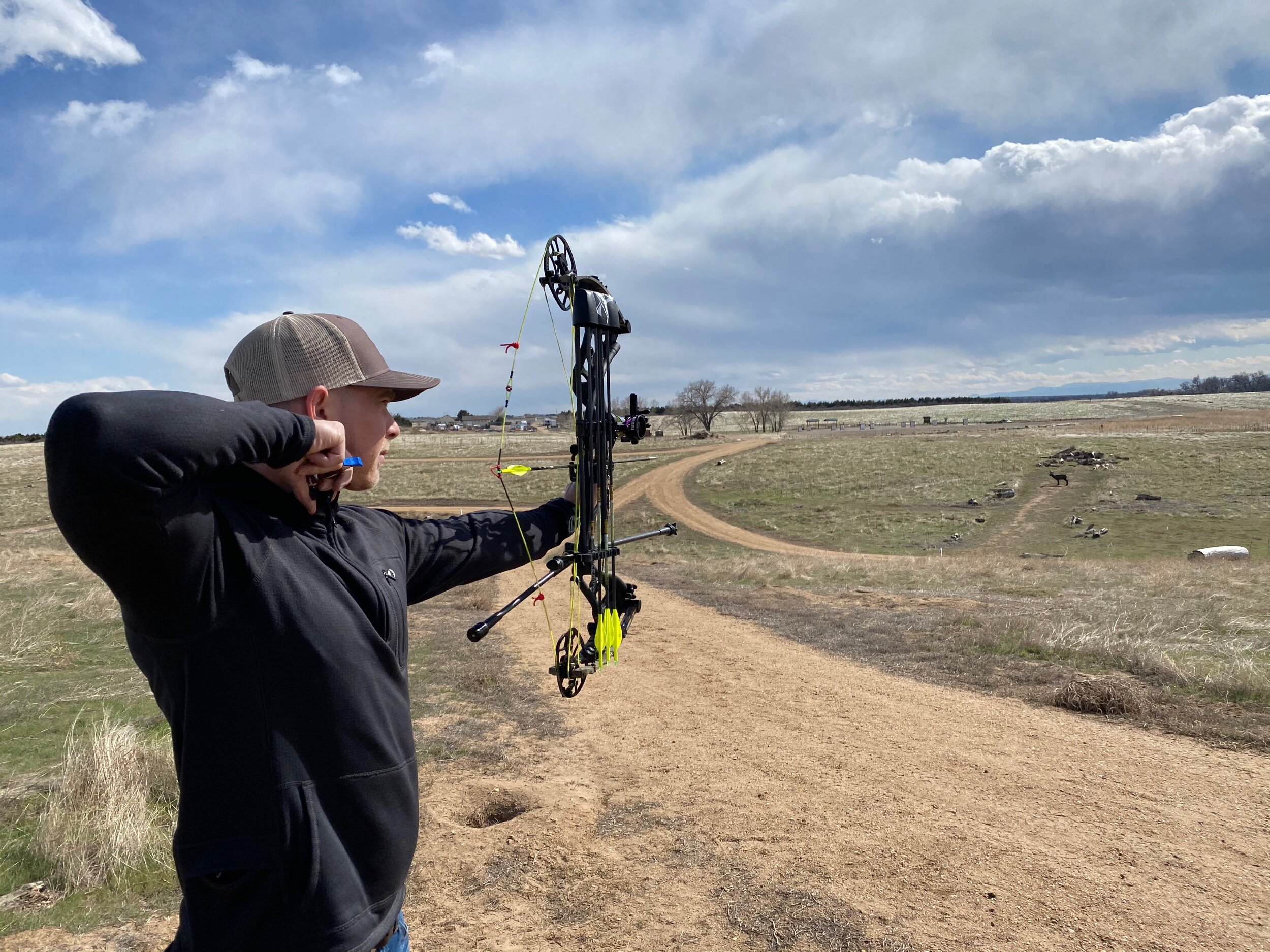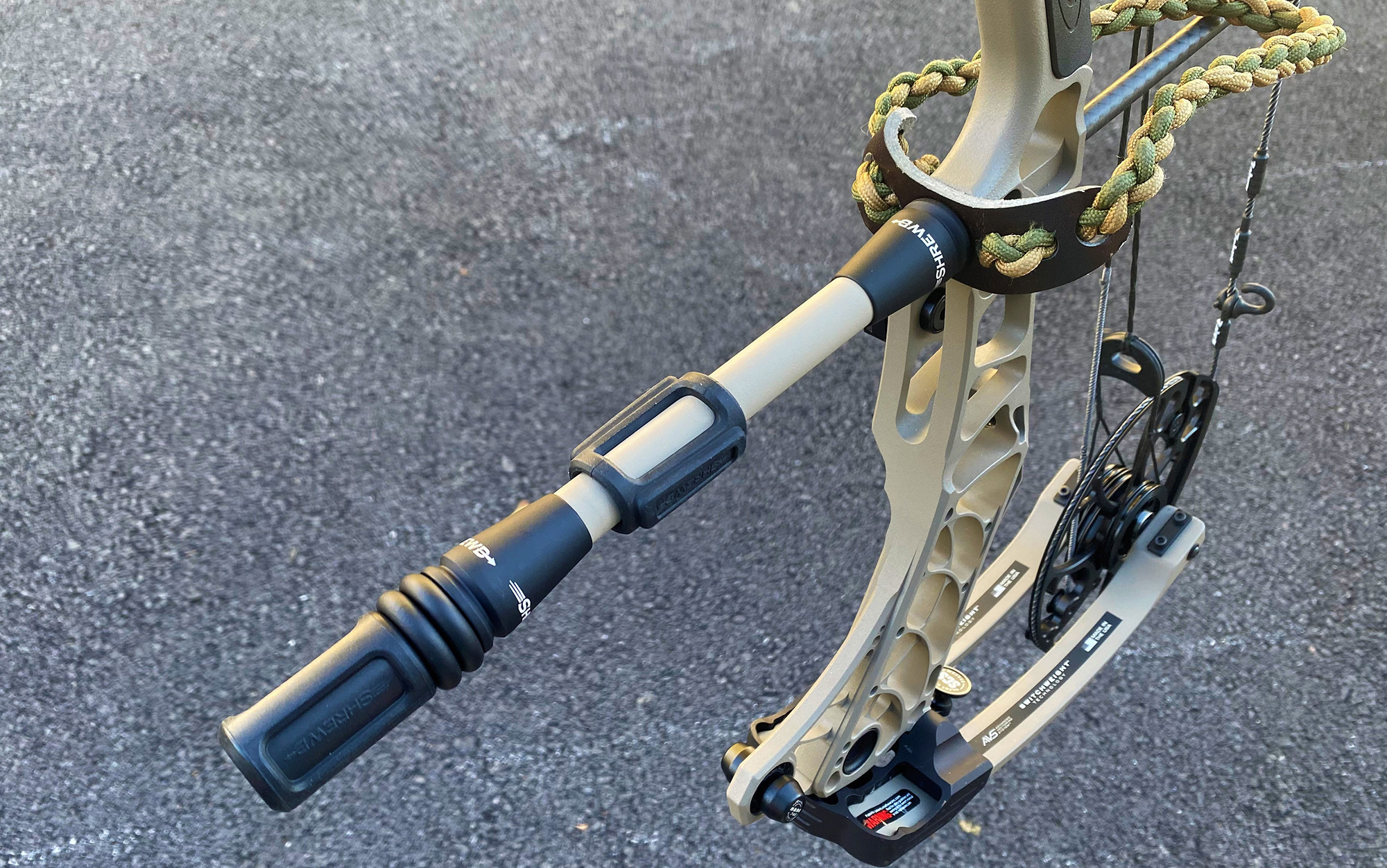Bow Stabilizer Buying Overview: Everything You Need to Know Prior To You Acquire
Bow Stabilizer Buying Overview: Everything You Need to Know Prior To You Acquire
Blog Article
Boost Your Archery Efficiency: The Ultimate Overview to Bow Stabilizer Configuration
Enhancing your archery efficiency requires a thorough technique to every element of your devices configuration. Among the different components that add to precision and stability, the bow stabilizer plays a critical function in improving your shot implementation. Comprehending how to maximize your bow stabilizer setup can lead to significant improvements in your overall accuracy and consistency on the range or in the area. As we explore the details of picking the ideal stabilizer weight, placing, and make improvements strategies, you will reveal the key to opening your complete potential as an archer.
Understanding Bow Stabilizers
In the realm of archery tools, the duty and function of bow stabilizers stand as vital elements for improving shooting accuracy and security. Bow stabilizers are created to minimize bow torque, decrease resonances, and help in holding the bow stable during the intending and launch procedure. By connecting a bow stabilizer to the riser of the bow, archers can experience improved equilibrium and decreased hand shock, leading to more constant and specific shots.
The key function of a bow stabilizer is to moisten any kind of resonances that take place upon launching the arrow. This reduction in resonance not only improves the shooter's convenience but also helps preserve focus and control throughout the shot cycle. Furthermore, bow stabilizers help in reversing the weight of devices attached to the bow, such as views, quivers, and arrow relaxes, making certain optimum weight distribution for improved stability.
Understanding the auto mechanics and benefits of bow stabilizers is crucial for archers seeking to adjust their shooting performance and achieve better accuracy on the range or in the field.

Picking the Right Stabilizer Weight
Selecting the proper weight for your bow stabilizer is a vital element of optimizing your archery configuration for boosted shooting efficiency. The stabilizer weight directly influences exactly how effectively the stabilizer reduces resonance and supports your bow throughout the shot. When picking the right stabilizer weight, it's vital to consider your capturing design, bow equilibrium, and individual preferences.
Lighter stabilizers, commonly evaluating between 3-6 ounces, are preferred by archers who prioritize maneuverability and fast target purchase. On the other hand, much heavier stabilizers, ranging from 8-12 ounces or even more, are preferred by target archers seeking maximum stability and reduced bow activity.
Inevitably, the best stabilizer weight for you will rely on your shooting objectives and choices. Explore different weights and locating the one that provides the ideal balance of stability and ability to move is vital to improving your archery efficiency.
Setting Up Your Bow Stabilizer
To correctly mount your bow stabilizer, guarantee that you have all the required tools and adhere to these step-by-step instructions for a safe and reliable arrangement. Start by determining the front stabilizer bushing on your bow riser. A lot of bows have pre-threaded openings for stabilizer setup. Next off, apply a tiny quantity of bowstring wax to the strings of the stabilizer screw to avoid it from loosening up during use.
Very carefully thread the stabilizer right into the front bushing by hand, seeing to it not to cross-thread it (bow stabilizer). Once the stabilizer is comfortably in area, make use of a suitable wrench to tighten it safely. Stay clear of over-tightening, linked here as this can cause damages to the bow or stabilizer
After installing the stabilizer, check to ensure it is straight and aligned with the bow. Some stabilizers come with adjustable weights or dampeners; adjust these according to your preferences and shooting design. Last but not least, examination the acquiesce ensure the stabilizer is successfully minimizing vibration and improving your shot consistency.
Readjusting Stabilizer Position for Precision
After setting up the bow stabilizer securely, maximizing its setting is important for improving precision in your capturing. The setting of the stabilizer can considerably affect the equilibrium and stability of your bow during the shot cycle. To readjust the stabilizer for optimum precision, start by explore various placements. Relocating the stabilizer better to the riser can help in reducing the bow's total weight circulation, possibly boosting your aiming security. Alternatively, prolonging the stabilizer further out can boost the bow's forgiveness and lower the impacts of torque on the shot.
When readjusting the stabilizer position, consider the kind of capturing you do. For target archery, a longer stabilizer placed better out could be advantageous for added stability during the intending procedure. On the other hand, hunters might prefer a much shorter stabilizer for much better ability to move in the area. Keep in mind to make small adjustments and examine your configuration after each modification to identify the optimum placement for your capturing design and preferences.
Fine-Tuning Your Stabilizer Configuration

Furthermore, consider the placement of any type of dampeners or weights along the stabilizer pole. Relocating these elements closer to or additionally from the riser can alter the stabilizer's total effect on your bow's equilibrium. Fine-tuning advice these details can help in reducing resonance, reduce hand shock, and enhance general control during the shot implementation.
Routinely reassess your stabilizer configuration as your shooting strategy develops to guarantee it remains to complement your kind and shooting goals. By finetuning your stabilizer setup with accuracy and care, you can enhance your bow's efficiency and boost your archery abilities to new elevations.
Verdict
In verdict, optimizing your bow stabilizer arrangement is crucial for enhancing your archery performance. By comprehending the purpose of stabilizers, picking the ideal weight, properly placing the stabilizer and setting up, and fine-tuning its arrangement, you can enhance your precision and consistency in capturing. Put in the time to experiment with different arrangements and adjustments to find the configuration that works ideal for you and assists you achieve your archery goals.
Bow stabilizers are designed to reduce bow torque, minimize resonances, and help in holding the bow consistent throughout the intending and release procedure. By connecting a bow stabilizer to the riser of the bow, archers can experience improved balance and lowered hand shock, resulting in even more constant and exact shots.

The stabilizer original site weight straight affects just how successfully the stabilizer minimizes vibration and supports your bow during the shot. bow stabilizer. By recognizing the objective of stabilizers, selecting the ideal weight, properly positioning the stabilizer and mounting, and adjust its configuration, you can improve your accuracy and uniformity in shooting
Report this page